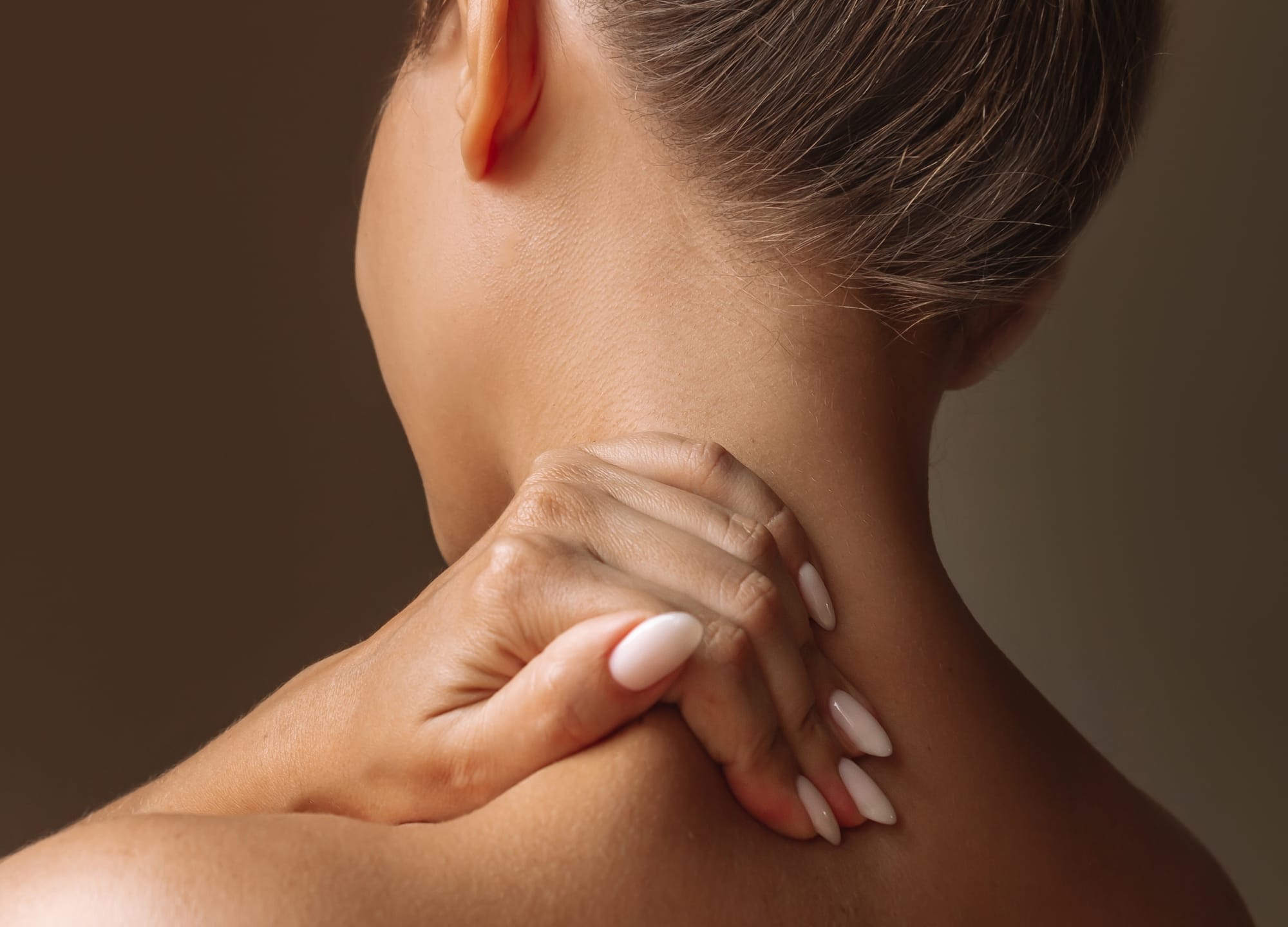The list of places where Botox can be injected is a lengthy one; the scalp, scrotum, armpits, and pretty much everywhere in between can benefit from the neurotoxin. The latest hotspot for injections that can deliver both functional and aesthetic gains? The trap, aka the trapezius muscle. Here, doctors weigh in on why #traptox is trending, what it is, and how to determine if it’s a good option for you.
What is trap Botox?
Simply put, it involves neurotoxin injections into the trapezius muscle. “This is a very strong muscle that extends from the neck to the shoulders and down the back, almost in a diamond shape,” explains Dr. Carolyn Treasure, a board-certified physician in New York City. As is the case with any kind of neurotoxin injections, these interrupt the nerve impulses to the muscle, causing it to relax, which in turn has two different benefits. “This can ease tension and pain in the neck area as well as have a cosmetic effect,” says Dr. Deanne Mraz Robinson, a board-certified dermatologist in Westport, Connecticut. “It slims and debulks the muscles, reducing a hunched-over appearance and creating a more elongated neckline.” In this way, it’s very similar to the benefits that masseter Botox, which both alleviates jaw pain and slims the jawline, offers.
It’s worth noting that traptox, as it’s called on social media, isn’t some groundbreaking new treatment. Dr. Treasure points out that it’s long been used in South Korea for said aesthetic reasons. It’s now gaining popularity in the U.S.; at last count, #traptox videos had more than 6.2 million views on TikTok. “We’re all looking down at our computers and phones all the time, which overworks and tenses up these muscles. This helps relax that tension, offering a longer duration of pain relief than the massage or physical therapy options people previously had, as well as keeps the neck looking elongated,” says Dr. Jessie Cheung, a board-certified dermatologist in Willowbrook, Illinois, and New York City, of the increased popularity. To that point, she notes that most of the patients she sees for trap Botox are seeking it to relieve neck and/or shoulder discomfort, although some do it purely for the neck-slimming effect.
@drbitafarrell #traptox #trapeziusbotox #shoulderbotox #shoulderslimmingbotox #headachebotox #botox #botoxtraining #drbitafarrell #naturalaestheticscenter ♬ original sound – Levin
Who is a good candidate for trapezius Botox?
If you’re considering it for pain relief, you’ll want to first make sure that there isn’t some kind of underlying problem or injury causing that pain, notes Dr. Treasure. Dr Robinson agrees, adding that it’s worth visiting an orthopedist to rule out any medical issues; she cites a herniated disk, which can put stress on the trapezius muscle, as one example.
If, in fact, it is just chronic muscle tension, pretty much anyone can benefit from these injections. Dr. Cheung adds that they’re also a great option for those who clench their jaws and/or grind their teeth, as the muscles in the jaw, temple, neck, and shoulders are all connected. If your motivations are purely cosmetic and you just want a slimmer, more contoured appearance for your neck and shoulders, then this is also a great choice, says Dr. Treasure.
How many units of Botox are needed, and what does treatment feel like?
This can vary from person to person, but all the doctors we spoke with say that anywhere from 20–50 units, per side, is a good average. (The total cost will vary based on what your provider charges per unit; Dr. Cheung says trapezius Botox costs about $1,300–$1,500 in her office.) Exactly where it’s injected depends on the individual’s muscle anatomy, but there are typically five to six injection points, starting from where the neck meets the shoulder and moving down the shoulder line, says Dr. Treasure.
One RealSelf editor who tried trapezius Botox said it was more comfortable than getting Botox in the forehead and noted that all she felt were her muscles twitching as the needle went in.
When will you see results, and how long do they last?
According to Dr. Cheung, most patients start to notice changes after a week, with the results—both aesthetic and functional—fully setting in after about a month. At this point, people are usually happy with the pain relief, but some love the slimming effect so much that they’ll come back to get more just for that reason, she adds.
You can expect the results to last four to six months, fewer if you’re working your muscles a lot. “The effects of neurotoxin in muscles that are used most frequently tend to wear off faster than in those used less frequently,” explains Dr. Robinson. “So if you’re always tensing up your traps in workouts or from stress, this may impact how long your results last.” To that point, Dr. Cheung says that while you can still exercise as normal after the fact, it is best to avoid specific exercises that target your upper back.
What are the risks and side effects of trap Botox?
“This is an overall low-risk, high-reward treatment,” says Dr. Robinson. (Although it does bear mentioning that this is an off-label use of Botox.) That being said, the risks that apply to any kind of neurotoxin injections are the same. Because the trapezius muscle is so big, it’s very hard to inject too much Botox into it. However, there is a risk of hitting the wrong muscle or putting too much in the wrong place, which could make it hard to turn your neck or hold up your head, cautions Dr. Cheung. That’s why seeking out an experienced injector who’s well versed in anatomy is absolutely paramount, she adds.
While you’ll definitely notice the tension relief and slimming effects, Dr. Treasure says most people don’t pick up on any other changes when it comes to day-to-day activities; in other words, this isn’t going to make it harder for you to lift something or carry a bag of groceries. But there is a lot of talk on social media about another, unexpectedly positive side effect—trapezius Botox fans claim that it inadvertently results in an ab workout. Dr. Cheung says they’re not wrong. “When you relax the trap muscles, you have to rely on your abdominal muscles to hold up your body instead of your shoulders. So yes, you’re working your abs and engaging your core, and this can also help with lower back pain,” she says.











